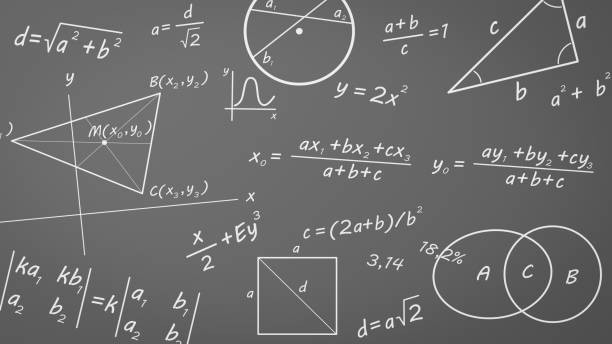Area Of A Isosceles Triangle- How to Calculate it Using a Simple Formula

An isosceles triangle is a geometric figure with two sides of equal length, typically the legs, and a third side of a different size, known as the base. The angles opposite the equal sides are also congruent, making it symmetrical.
The area of a geometric shape must be calculated for several uses, such as engineering, design, and architecture. Determining the area of an isosceles triangle helps with practical factors like surface covering and resource allocation by providing necessary information about how much space the triangle occupies.
Brief Overview of the Simple Formula
A straightforward formula can be employed to calculate the area of an isosceles triangle. The formula is based on the base (b) lengths and one of the equal sides (a). Let’s denote the height of the triangle as ‘h.’ The formula is:
Area= ½ x Basex Height
Area= ½ x b x h
This formula utilizes the base and the height, where the height is the perpendicular distance from the base to the opposite vertex. The 1/2 factor accounts for the fact that the area of a triangle is half the product of its base and height.
Now, let’s explore how to determine an isosceles triangle’s height (h). To find h, you can use the Pythagorean theorem or another method, depending on the information available about the triangle.
General Area Formula for Triangles
The general formula for calculating the area (A) of any triangle, regardless of its type, is given by:
A=1/2×Base×Height
This formula applies to all triangles and is based on the concept that the area of a triangle is half the product of its base and height. The height is the perpendicular distance from the base to the opposite vertex.
Differentiating Isosceles Triangle Calculation

1- Overview of Special Considerations
For an isosceles triangle, which has two sides of equal length (legs) and a base of a different length, the area formula remains the same:
A=1/2×Base×Height
However, when working with isosceles triangles, specific considerations are related to determining the height (h).
2- Significance of Base and Height
In an isosceles triangle, the base (b) is one of the unequal sides, and the height (h) is the perpendicular distance from the base to the opposite vertex. The height bisects the base, forming two right-angled triangles. To calculate the height, one may use the Pythagorean theorem or other methods, depending on the information available. If the lengths of the legs are known, the height (h) can be determined using the formula:
h=a2−(2b)2
Where:
- a is the length of one of the equal sides (legs),
- b is the length of the base.
Once the height is determined, it can be used in the general area formula:
A=1/2×b×h
This comprehensive approach considers the unique characteristics of isosceles triangles, ensuring an accurate calculation of their area by incorporating the base and height appropriately.
How Using this Simple Formula can Benefit You
1- Time Efficiency
The simple formula for calculating the area of an isosceles triangle (A= ½ ×b×h) offers a time-efficient solution compared to more general formulas. Since an isosceles triangle has specific characteristics, the formula directly incorporates the base and height, omitting unnecessary parameters. This simplification reduces the number of steps needed for calculation, making it quicker and more straightforward, especially when dealing with isosceles triangles in specific scenarios.
2- Accuracy Compared to General Formulas
While the simple formula of the area of an isosceles right triangle is tailored for isosceles triangles, it maintains accuracy comparable to general formulas. By directly considering the unique attributes of isosceles triangles, such as the equality of two sides and the specific calculation of height, the formula remains precise in determining the triangle’s area. This specialization ensures that accuracy is not compromised and the results align with the geometric properties of isosceles triangles.
3- Practical Applications
The simple formula for isosceles triangles has practical applications in various fields:
- Engineering and Architecture: Quick and accurate area calculations are essential when designing structures that involve triangular elements, such as roofs or support structures. The formula’s simplicity makes it a practical tool for engineers and architects.
- Surveying and Land Planning: Triangular areas may need to be calculated for land partitioning or assessment. The straightforward nature of the formula facilitates efficient calculations in surveying applications.
- Education: In education using the area of an equilateral triangle calculator, particularly in geometry courses, the simple formula can be introduced to students as an accessible way to calculate the area of isosceles triangles. Its simplicity aids in the understanding of basic geometric principles.
- Computer Graphics: In computer graphics and modeling, the formula can be implemented in algorithms for rendering and modeling isosceles triangles in virtual environments. Its simplicity is advantageous for real-time applications.
Tips for Efficient Calculation
- Calculator Apps: Take advantage of calculator apps or software to calculate the area of a right isosceles triangle formula that allows you to quickly and accurately input and compute geometric formulas, including the isosceles triangle area formula.
- Geometry Software: Explore specialized geometry software that enables interactive manipulation of geometric shapes. This can enhance visualization and aid in understanding the relationships between different elements in isosceles triangles.
- Spreadsheets: Use spreadsheet software like Microsoft Excel or Google Sheets to set up formulas and perform repetitive calculations efficiently. This can be particularly helpful when working with multiple isosceles triangles or conducting iterative calculations.
- Estimation: Round numbers to make mental calculations easier. This is especially useful when working with measurements that don’t require high precision.
- Use Patterns: Recognize patterns in numbers. For instance, in an isosceles triangle, if the base is 8 and one leg is 6, the other leg will also be 6 due to the equal side lengths.
5 Common Mistakes to Avoid
- Neglecting the 1/2 Factor: The 1/2 factor in the formula is crucial. Multiplying the result by 1/2 can lead to correct area calculations. Ensure you apply this factor to accurately represent that the area of a triangle is half the product of its base and height.
- Height Calculation: The height (h) is the perpendicular distance from the base to the opposite vertex. Avoid using slant heights or other distances not perpendicular to the base when calculating the area. Pay close attention to the geometric orientation of the triangle.
- Use the Pythagorean Theorem Carefully: If you need to calculate the height using the Pythagorean theorem, ensure that you square and sum the correct side lengths. Common mistakes include using the hypotenuse instead of a leg or neglecting to square the side lengths properly.
- Double-check Input Values: Before plugging values into the formula area of an equilateral triangle, double-check that you use the correct base and height numerical values. Transposing numbers or using the right values can lead to accurate results.
- Visualize the Triangle: Sketch the isosceles triangle and visually confirm that the base and height align with your calculations. Visualization can help catch errors and ensure the geometric interpretation matches the numerical data.
Educational Resources For Your Learning

Online Tools for Isosceles Triangle Area Calculation
1- Wolfram Alpha (wolframalpha.com)
Wolfram Alpha is a powerful computational engine that can assist in solving mathematical problems, including the calculation of the area of isosceles triangles. Input the triangle’s base and height, and Wolfram Alpha will provide the result.

2- Desmos (desmos.com)
Desmos is an interactive graphing calculator that can help visualize and calculate the area of geometric shapes, including isosceles triangles. You can input the coordinates of the vertices or use sliders to adjust triangle parameters.

3- GeoGebra (geogebra.org)
GeoGebra is a dynamic mathematics software that provides geometry, algebra, and calculus tools. It offers a platform to construct and manipulate isosceles triangles, making it useful for learning and practicing area calculations.

Interactive Learning Platforms

1- Brilliant.org
Brilliant is an interactive learning platform offering mathematics and science courses. The geometry courses include topics on triangles, and the interactive nature of the platform allows for hands-on learning and problem-solving.

2- Coursera (coursera.org)
Coursera provides online courses from universities and institutions worldwide. Courses in geometry and mathematics, such as “Introduction to Geometry” or “Mathematics for Machine Learning,” can be beneficial for a deeper understanding of geometric concepts.

IXL (ixl.com)
IXL is an online learning platform that offers a personalized learning experience. It covers a wide range of topics, including geometry, and provides interactive exercises to reinforce concepts related to isosceles triangles and their areas.
Final Thoughts
Remember that learning is a continuous journey, and each step you take to explore and understand mathematical concepts contributes to your growth as a learner. Whether you are a student, a professional in a technical field, or someone with a keen interest in geometry, the simplicity of isosceles triangle area calculation is a gateway to a broader world of mathematical exploration.
As you encounter different isosceles triangle configurations, you may find joy in applying your knowledge to solve unique challenges and puzzles. This hands-on experience enhances your problem-solving skills and boosts your confidence in tackling geometric questions.

Similar Posts
Fixed vs NBN: Which Internet is Better?
China’s AI Cold War 2025 Arsenal From DeepSeek to ERNIE 4.5 Challenges Western Hegemony
Unbiased Review of TimeTap Online Scheduling Software